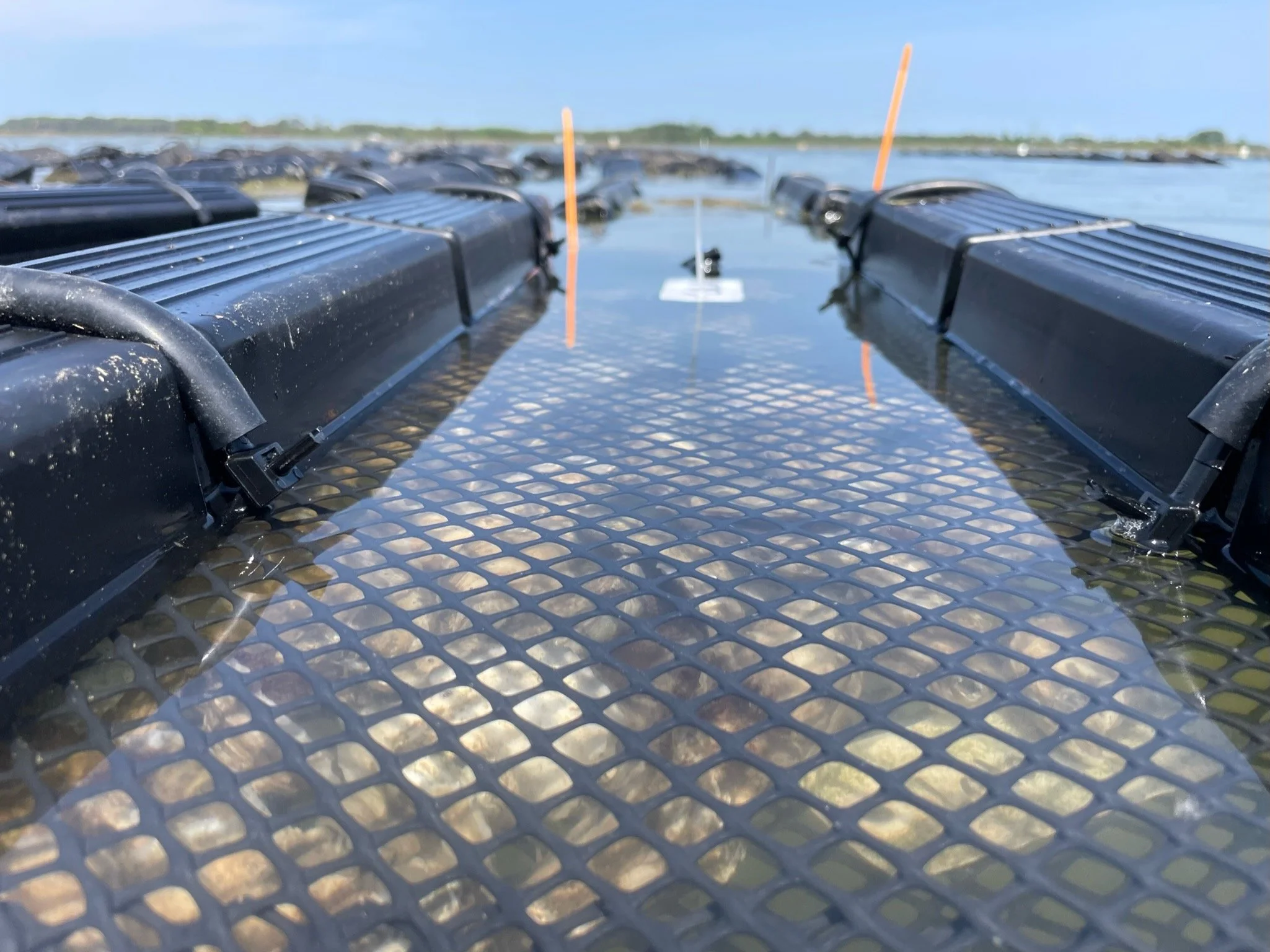Sudden Unusual Mortality Syndrome in Oysters: 2024 Summary & Status
Ryan Carnegie & William Walton, Virginia Institute of Marine Science
Sudden Unusual Mortality Syndrome, or SUMS, is the elevated mortality of market-ready aquacultured eastern oysters, Crassostrea virginica, that was first noted in Virginia in 2012 but has now been observed from Maine to Texas. This mortality typically occurs in the late spring and early summer, around the time of peak reproductive activity, in oysters in their second season of growth. These mortalities have continued to be reported periodically with no clear pattern but have consistently inflicted devastating levels of mortality on the affected farms (30% to over 70% in the worst cases). This ongoing issue has led to researchers in the region prioritizing a better understanding of this phenomenon. Key observations include the following:
SUMS is not caused by the major regional oyster pathogens, Perkinsus marinus (dermo) or Haplosporidium nelsoni (MSX), nor are there indications of any other infectious disease being a cause.
There is no evidence for SUMS affecting wild oyster populations; it is a phenomenon that may occur in some intensive aquaculture systems.
There is no clear correlation between particular culture methods or practices and SUMS, suggesting that shellfish growers are not directly causing these mortalities.
There is no clear evidence that any one specific selected genetic line of oysters (selected for specific performance traits, such as disease resistance and fast growth) is more susceptible to SUMS than any other.
The current thinking is that SUMS is the product of an adverse interaction among three possible factors:
Increasingly stressful marine environmental conditions, potentially including high seawater temperatures and reduced dissolved oxygen levels, among other possibilities;
Oyster genetics and physiology, including the metabolic stress of reproduction at a challenging time of year because of high temperatures and possibly reduced phytoplankton food quantity and quality; and
Husbandry factors including overcrowding and inadequate biofouling control as contributing factors.
Present guidance to the aquaculture industry focuses on the husbandry aspects they can control, to minimize stress on the oysters in production. Because of the widespread and apparently non-infectious nature of SUMS, there are no known implications of the phenomenon for interstate commerce in aquacultured oysters, nor any risk to human health.
Ongoing work by scientific researchers in the region seeks to better understand the influences of husbandry practices on SUMS, to understand the potential role of oyster microbiomes in the mortality, and to identify genetic signatures associated with better survival. Selective oyster breeding is additionally increasing an emphasis on general resilience of aquacultured oysters, in addition to the resistance to major oyster pathogens and improved growth. This work collectively will ensure that oyster producers have greater success in managing the SUMS challenge at their farms in the future.
In addition, Oyster South is leading a collaboration of researchers and Extension agents to conduct a regional study in 2025 and 2026 to quantify temporal and spatial patterns in SUMS as well as get higher resolution data on environmental parameters associated with SUMS events. This effort will be introduced at the 2025 Oyster South Symposium.
Read the report from the January 2024 workshop held at the Virginia Institute of Marine Science here.

